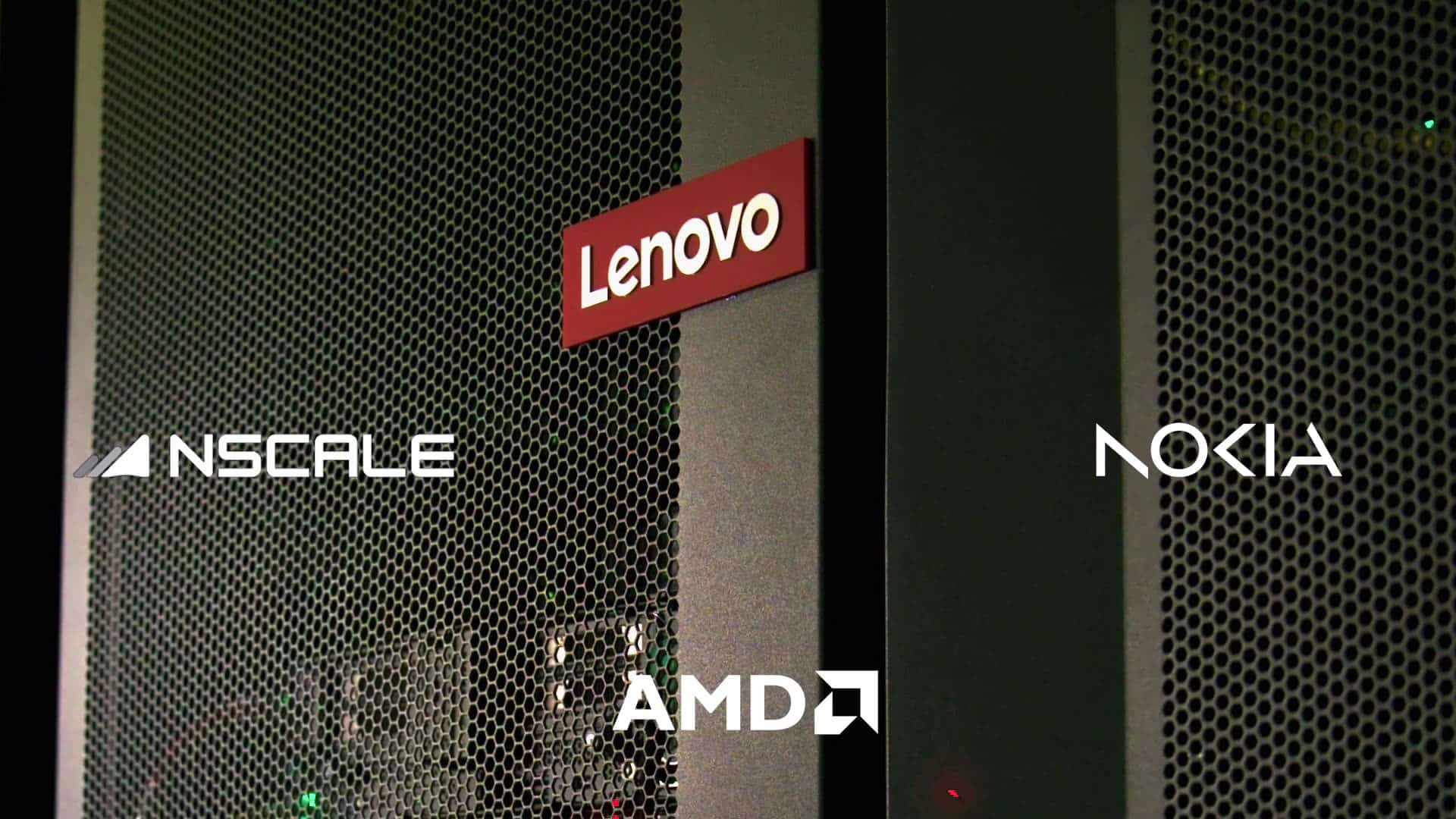With the demand for GPUs growing faster than deployment capacity in companies, Lenovo introduced GPU Advanced Services, a modular portfolio of professional services to plan, implement, and operate GPU-accelerated infrastructures. The promise: accelerate AI adoption, avoid underutilized infrastructure, and improve load performance by up to 30% through optimization and tuning (based on Lenovo’s internal assessments).
The company advocates a “services-first” approach: maximize existing investments, deploy faster, and scale without getting trapped in proprietary stacks. “The market needs exactly this as AI use cases become mainstream,” summarizes Steven Dickens (HyperFRAME Research).
What’s Included: Three Modules, from Idea to Operation
GPU Advanced Services are offered in three options that can be purchased separately or combined:
- GPU Plan & Design — For those just starting out: workload assessment, sizing, technology selection, and architecture design.
- GPU Implementation — For deployment: architectural documentation, stack configuration (stack), deployment guide, and knowledge transfer.
- GPU Managed Services — For production: continuous optimization, updates, and recovery support, including patching and compliance, in hybrid and on-premises environments.
As an entry ramp, Lenovo AI Fast Start helps identify and validate use cases before scaling to production with GPU Advanced Services.
Why It Matters: From “Buying GPUs” to “Getting the Most Out of Them”
The most common frictions in AI projects are not FLOPS, but operational complexity: queues for drivers, firmware, runtimes (CUDA/ROCm), data bottlenecks (I/O/storage/network), cluster schedulers, orchestration of multi-node and multitenancy, and fine-tuning of frameworks (PyTorch, TensorFlow, Triton, Ray, vLLM, etc.). The typical result is GPU underutilization and inflated costs.
Lenovo proposes shortening times with validated architectures (e.g., Lenovo Hybrid AI Advantage™ and the Hybrid AI 285 platform), deep platform integration (ThinkSystem/HPC), and certified experts who adjust topologies, resource planning, data pipelines, and AI stacks for workloads like genAI, real-time video, or content creation.
Industry Impact and Reference Case
- Healthcare: Assisted diagnostics with real-time inferences, improving clinical speed and accuracy.
- Automotive: Edge AI for connected and autonomous vehicles with models for continuous optimization.
- Media/Entertainment: Tuning for real-time rendering and more efficient production workflows.
- Cirrascale Cloud Services: Reduced GPU deployment time by >40% with Lenovo support, accelerating AI innovation for clients.
Stack Compatibility: Open, from Single Node to Multi-Node
The services align with solutions like Hybrid AI Advantage and ThinkSystem/HPC hardware, but the message is no lock-in: design from single node to multi-node, customizable AI stack, and support for hybrid environments (data center and cloud). The goal is to maximize existing investment and optimize performance per dollar, watt without forcing a client into a single platform.
Lenovo backs this approach with credentials: #1 provider by number of supercomputers in the TOP500 (June 2025), 11 years of best uptime on x86 (ITIC), and a top position in server security.
What Can a Company Expect? (Typical Deliverables)
- Capacity plan and compatibility matrix (GPUs, CPUs, network, storage, HBM/PCIe/NVLink, CXL where applicable).
- High-performance, high-availability architecture: network topologies (Ethernet/RDMA/InfiniBand), schedulers and load queues, quotas/fair-sharing, isolation.
- Data pipelines: optimized data loaders, caches, columnar formats, sharding, pre-fetching, memory pinning.
- Framework tuning: compilers (XLA/TensorRT/ONNX), quantization (INT8/FP8/bf16), dynamic batching, tensor parallelism, pipeline parallelism.
- Observability and FinOps: GPU utilization metrics, I/O, latency, SLA for inference, and cost per token; operational runbooks and response plans.
Limits and Cautions (Balanced View)
- “Up to 30%”: improvement based on internal evaluations; actual benefit depends on workload profile, data, and operational maturity.
- Talent: managed services reduce workload but don’t eliminate the need for an internal team familiar with the business and models.
- Data: without proper governance (quality, lineage, security), mechanical tuning loses traction.
- Multicloud coexistence: agreeing on perimeters and responsibilities (patching, compliance, recovery) is key to avoiding “gray areas.”
Questions Worth Asking
- KPIs and baseline: How will you measure utilization, latency, throughput, and cost before and after?
- Portability: What options are available if tomorrow you switch GPU vendors or cloud providers?
- Security and compliance: How do you integrate patching, scanning, MFA, segregation, and traceability in hybrid environments?
- Continuity: What are the guaranteed RTO/RPO for critical models and datasets?
- Knowledge transfer: What training and documentation will your team receive?
Conclusion
GPU Advanced Services is Lenovo’s answer to a less glamorous but crucial issue than FLOPS: operating and optimizing AI infrastructure without wasting time or budget. With design, deployment, and operation modules—supported by validated architectures—the offering promises a faster, safer path from pilot to production, with tangible performance and lower hidden costs. The real value will depend on metrics, data, and operational discipline; but for many organizations, having experts alongside can make the difference between accumulating GPUs and exploiting them fully.

